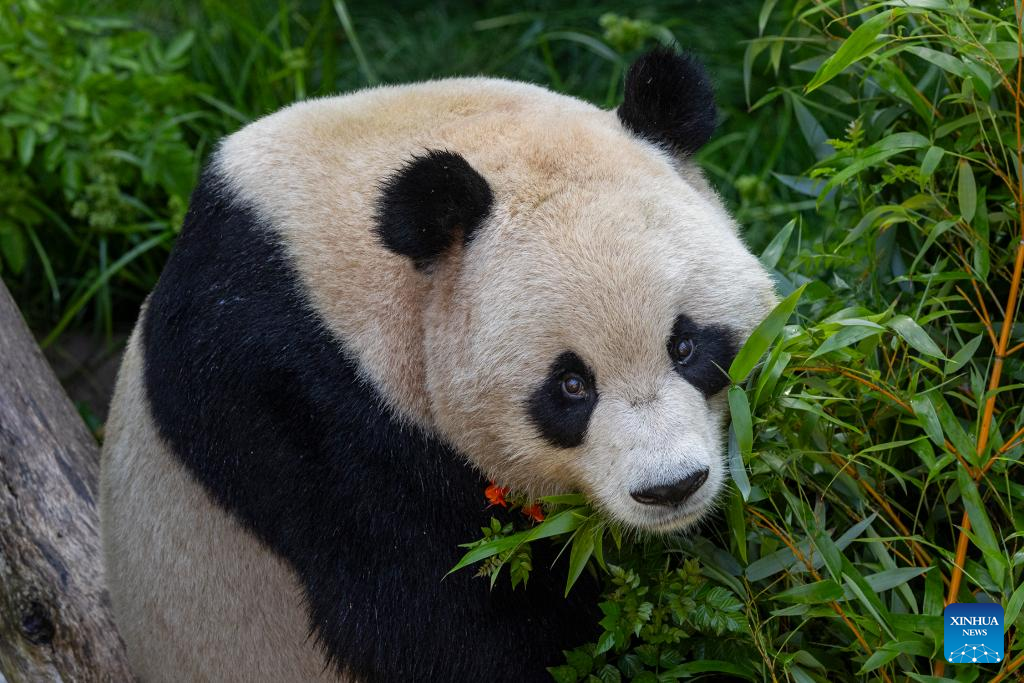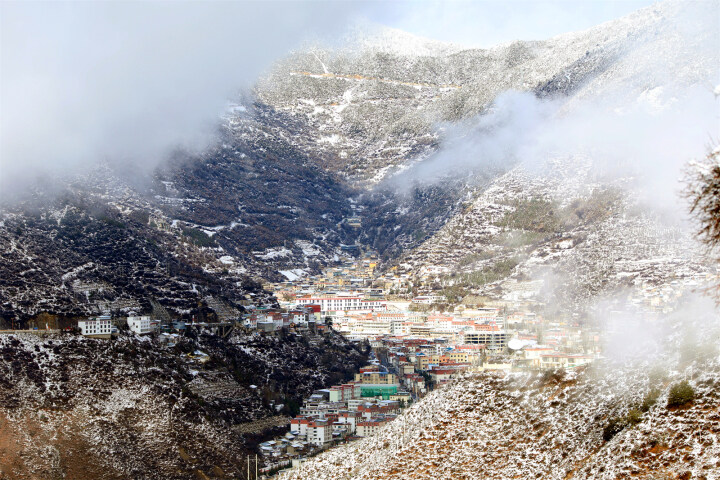Mt. Gaoligong in northwest Yunnan is one of the habitats for red pandas (ailurus fulgens). Monitored data by infrared cameras show the rare species can be seen at an altitude of 2400-3500 meters in the Gaoligong Mountain. 
The red panda has a catlike face and a bearlike build, but it is neither a cat nor a bear. It seems to be something in between. Red pandas feature a large tail with colored fringes behind their furry bodies. They have a mild personality, a round face and a charmingly naive manner.
As a "living fossil" that survived from the evolution of wild beasts, the red panda builds their homes at secretive sites in the wild. They often hide themselves in tree trunks or under rocks. Their glossy hair can serve as a camouflage, making them less visible to the enemies in the forest. Seemingly slow and a little clumsy, they’re highly skilled at climbing to the top of trees. A clean sleepyhead Mt. Gaoligong is endowed with sound environment, providing a natural shelter for rare animals such as the red panda, the takin, the hoolock gibbon and more. The red pandas in Yunnan Wildlife Park come from the mountain. When we visited the Kunming-based wildlife park the other day, the red pandas were all sleeping on pine branches ten plus meters above the ground high. Some guarded their heads into their limbs, some put the tail on the head, while others just lay on the branches, with their limbs hanging in the air. Visitors could not help laughing at the panda’s leisure life. 
“This Group is quite shy.” Mr. Li has worked with red pandas for ten plus years. “Red panda is a crepuscular creature, and they prefer cold days. They are active in winter, especially on snowy days. Their thick fur helps them to keep warm and resist cold, and the black part also absorbs heat from sunshine. That is why they could adapt to the cold environment.” Li said.
Red pandas love to doze off, which is also related to their low energy of food. Arrow bamboo leaves and bamboo shoots account for more than 90% of their daily diet. Wild red pandas usually go out to forage in the morning and evening hours, and they need to take a 4-hour break after a hearty meal. Frequent shorter breaks are also needed during forage, so that they could carefully choose the bamboo leaves and make up for the deficiency in nutrition and digestive ability. At the Yunnan Wildlife Park, staff members offered red pandas apples, bananas, pears and others everyday at 4:00 pm, so that they could get enough vitamins. At the fruits, the pandas are excited and quickly take on the food, using their forelegs. When they are thirsty, they would dip their forepaws in water and then slowly lick off the water. According to Mr. Li, red panda's day begins with a ritual cleansing. They clean their fur with their forepaws and scratch their backs with branches or stones. In nature, red pandas are closer to northern raccoons than giant pandas, and they both love clean-ups. After eating, red pandas often lick palms to "wash the hands" and carefully clean up the food residue on them. When peeing or defecating, red pandas choose a fixed place for both. They do not defecate anywhere like giant pandas. They are really clean animals. A quiet, lone ranger “Judging from the monitored data, the red panda has been photographed by infrared cameras at elevations of 2400-3500 meters in the Gaoligong Mountain. Moreover, their range of activities varies with seasons," said Huang Xiangyuan, who is an animal observer in the Tengchong administrative branch of the Gaoligong Nature Reserve. 
In Mt. Gaoligong, alpine bamboo groves form the main food source for red pandas. “They don’t hibernate. Red pandas eat bamboo shoots in spring and summer. When bamboo leaves are getting fewer in autumn and winter, they also feed on berries, tree leaves and moss. At times they prey on birds and even insects.” Huang told us that red pandas can move above the bamboo grove, using withered branches as passageways to climb to the top of taller trees for food. In the mating season, they build their nests on the trees. Gathering together the tips of four or five bamboo trees, they have a cleanup and make a nest in the trees. “Hundreds of infrared cameras have been installed in the Tengchong reserve, taking 2,000 plus pictures and a 5-hour video and providing data for the study of red pandas,” said Huang.
Red pandas usually have a fixed route for activities. Like lions and tigers, they patrol the “territory”, mark it with urine, or leave some secretion on stumps and stones. And they can also identify where the mate would show up. “Male red pandas are stronger, having darker fur and building larger nests. However, it may be difficult to tell the red panda’s gender only by their looks,” said Huang. “Because of their sense of territory, adult red pandas tend to roam alone in the wild, rarely seen in pairs or in groups.” Lazy and docile, red pandas lack alertness. As long as there is not too much noise, they’ll not be disturbed. However, they would jump into ripraps or treetops at great danger. If the threat is not so strong, they’ll get erected, using their forelegs to fight against the foe. In general, they make a "squeak" to communicate with each other. During the mating period in February or March, females and males often make the louder "wah-wah" sounds to attract mates. When fighting, red pandas make a broken “yi-yi” sound. However, their cute looks make it hard to see their real motives. When they raise their forelegs to threaten, we may mistake it as a way to show their cuteness. Reporting by Liu Xinwei and Meng Zhigang; trans-editing by Wang Shixue and Yuan Yingcen
|








7740f3b5-9ecb-438e-9052-76cb2d4bb671.jpg)

